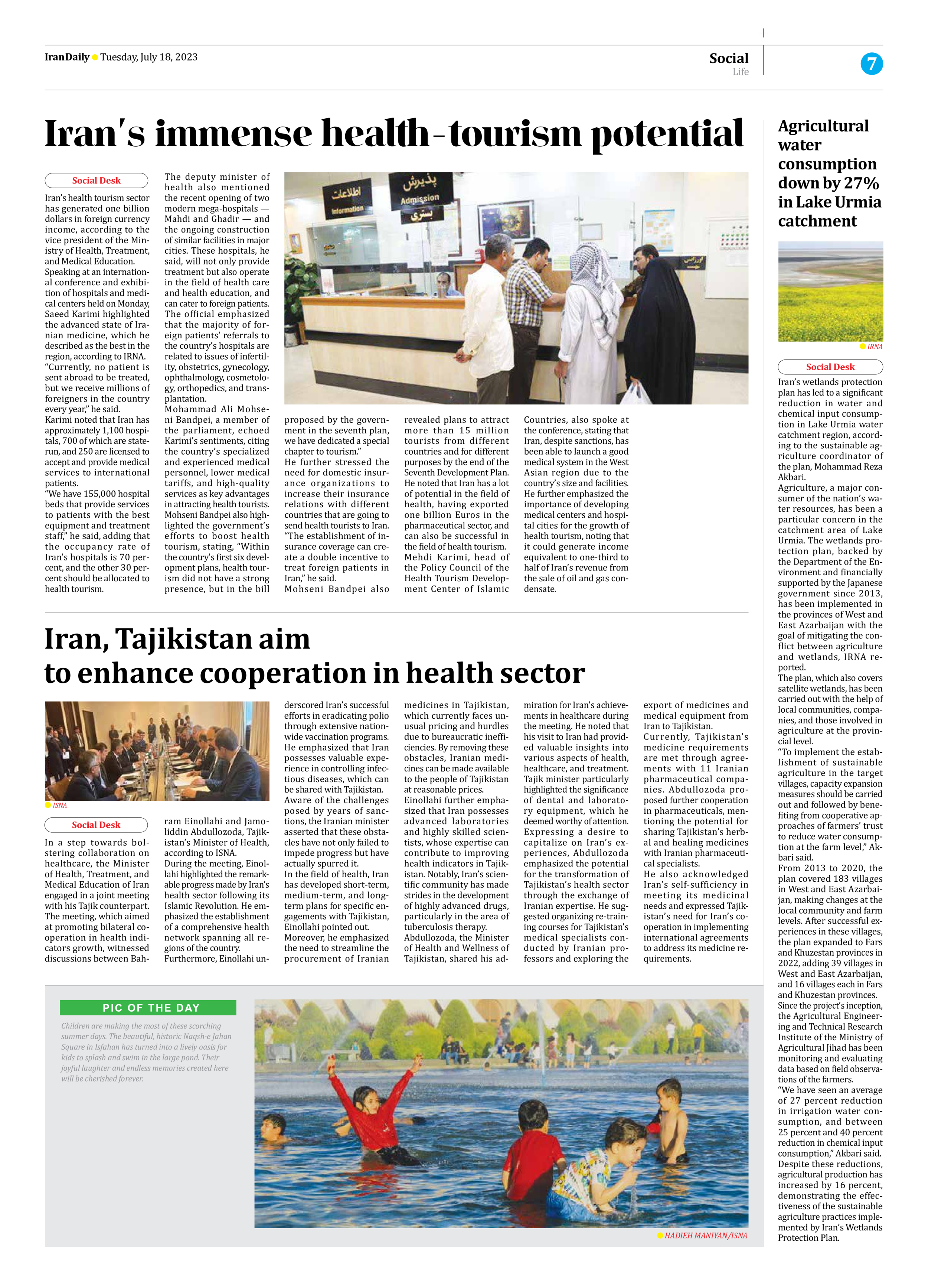
Iran’s immense health-tourism potential
Iran’s health tourism sector has generated one billion dollars in foreign currency income, according to the vice president of the Ministry of Health, Treatment, and Medical Education.
Speaking at an international conference and exhibition of hospitals and medical centers held on Monday, Saeed Karimi highlighted the advanced state of Iranian medicine, which he described as the best in the region, according to IRNA.
“Currently, no patient is sent abroad to be treated, but we receive millions of foreigners in the country every year,” he said.
Karimi noted that Iran has approximately 1,100 hospitals, 700 of which are state-run, and 250 are licensed to accept and provide medical services to international patients.
“We have 155,000 hospital beds that provide services to patients with the best equipment and treatment staff,” he said, adding that the occupancy rate of Iran’s hospitals is 70 percent, and the other 30 percent should be allocated to health tourism.
The deputy minister of health also mentioned the recent opening of two modern mega-hospitals — Mahdi and Ghadir — and the ongoing construction of similar facilities in major cities. These hospitals, he said, will not only provide treatment but also operate in the field of health care and health education, and can cater to foreign patients.
The official emphasized that the majority of foreign patients’ referrals to the country’s hospitals are related to issues of infertility, obstetrics, gynecology, ophthalmology, cosmetology, orthopedics, and transplantation.
Mohammad Ali Mohseni Bandpei, a member of the parliament, echoed Karimi’s sentiments, citing the country’s specialized and experienced medical personnel, lower medical tariffs, and high-quality services as key advantages in attracting health tourists.
Mohseni Bandpei also highlighted the government’s efforts to boost health tourism, stating, “Within the country’s first six development plans, health tourism did not have a strong presence, but in the bill proposed by the government in the seventh plan, we have dedicated a special chapter to tourism.”
He further stressed the need for domestic insurance organizations to increase their insurance relations with different countries that are going to send health tourists to Iran.
“The establishment of insurance coverage can create a double incentive to treat foreign patients in Iran,” he said.
Mohseni Bandpei also revealed plans to attract more than 15 million tourists from different countries and for different purposes by the end of the Seventh Development Plan. He noted that Iran has a lot of potential in the field of health, having exported one billion Euros in the pharmaceutical sector, and can also be successful in the field of health tourism.
Mehdi Karimi, head of the Policy Council of the Health Tourism Development Center of Islamic Countries, also spoke at the conference, stating that Iran, despite sanctions, has been able to launch a good medical system in the West Asian region due to the country’s size and facilities.
He further emphasized the importance of developing medical centers and hospital cities for the growth of health tourism, noting that it could generate income equivalent to one-third to half of Iran’s revenue from the sale of oil and gas condensate.







